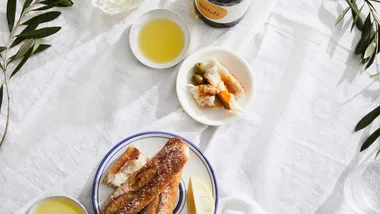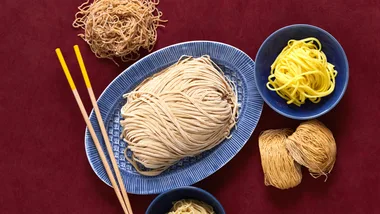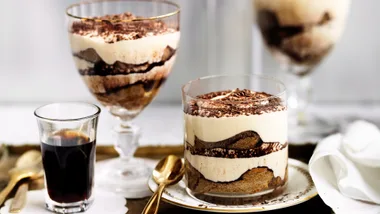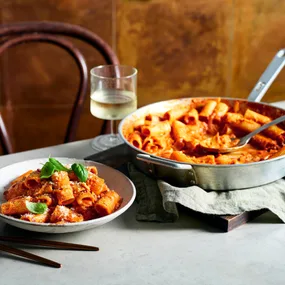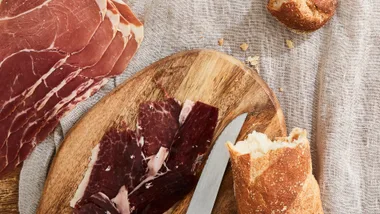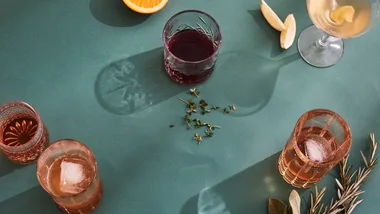Forget the chopping: the thing about onions that really makes me want to cry is seeing how often they’re not cooked properly. Right now I’m looking at a pot of finely chopped onions. They’re the base of my Bolognese, and in them I see the kernel of the finished dish. The way I cook and season these onions will determine in a large part the depth and quality of flavour of the sauce when it’s done. Onions have all sorts of uses, of course, but perhaps their most essential deployment is in forming this sort of foundation, whether it’s for a soup, a braise, a sauce, a tagine or a curry. These humble onions will eventually cook down and meld into the sauce, but far from disappearing, they play a major role in how the dish looks and tastes.
At the risk of stating the obvious, when you’re making something such as a beef or lamb casserole (or, of course, French onion soup) you want the onions to give a deep and rich flavour, so you cook them until they turn dark golden-brown. If you’re cooking something more delicate, such as a goat’s cheese and onion tart or a chicken ragù, then you want your onions to be only pale golden-brown. In both cases the onions will lend a unique character and colour to the dish, and in neither can the cooking be rushed.
The more gently onions are cooked, the sweeter their flavour. As they get darker, they will take on a kind of richness, until they begin to acquire a bitterness. This is something you usually work to avoid, but in the right context a touch of bitterness can be desirable, as in a Vietnamese beef noodle soup. In such cases onions are fried (or roasted) until they are very brown to pretty much charred, which gives that beautiful shade of dark brown to the soup, pleasing to both the eye and the palate.
The thing that surprises me is how often this step is misunderstood in the home kitchen – either the cooking is not taken far enough or it is not done gently enough before the caramelisation is arrested by the introduction of liquid and other ingredients. I have witnessed chopped onions being placed into a pan along with the oil (often before the pan is hot), and once they’ve been cooking for barely five minutes, in goes the carrot, the celery, and very soon after the tomato paste, the mince and so on. It’s a big mistake. The onions haven’t had a chance to actually cook – they need to go from raw to cooked and soft before beginning their browning. If they’re cooked too quickly, you’ll have raw onion inside and brown outside, and never get the richness of flavour you’re after.
I like to cook onions in generous amounts of oil and butter (a little bit of butter gives a nice flavour and the oil keeps it from burning) which have been warmed over a medium heat before the onions are added. This lets the onions sweat and sizzle, slowly turning soft and translucent before becoming a rich golden brown. This is the beginning of caramelisation, and it is precisely what I want. It is this reaction of the starches and sugars in the onions over a high heat which causes them to undergo their transformation.
I like to use a heavy-based pan for cooking onions because it gives an even, slow heat – as opposed to, say, a lightweight aluminium frying pan which tends to colour the onions too quickly. My favourite is a heavy copper saucepan – the copper distributes the heat beautifully. Start with a high heat, then, once the onions are added and have started to sweat, turn the heat to medium and keep stirring. They should be giving off steam and gently sizzling but not frying, which will make them brown too quickly. I always salt the onions once they’ve started softening – the salt draws liquid out into the pan and helps in the sautéing process. Salting early also gives a depth of flavour that can never be equalled by seasoning at the end of cooking alone. Add some salt in the beginning and adjust the seasoning when you’ve finished cooking.
To enjoy the magic of well-cooked onions on their own, make them the star of a dish and not just the bass line. French onion soup made with a rich beef stock and garnished with melted Gruyère on toast is the ne plus ultra at this time of year, while a flaky pastry filled with caramelised onions and goat’s curd is also hard to beat. And then there’s my all-time favourite onion dish, the Bavarian classic Käse Spätzle: small dumplings baked with caramelised onions and grated mountain cheese such as Gruyère.
 Antonia Pesenti
Antonia Pesenti

